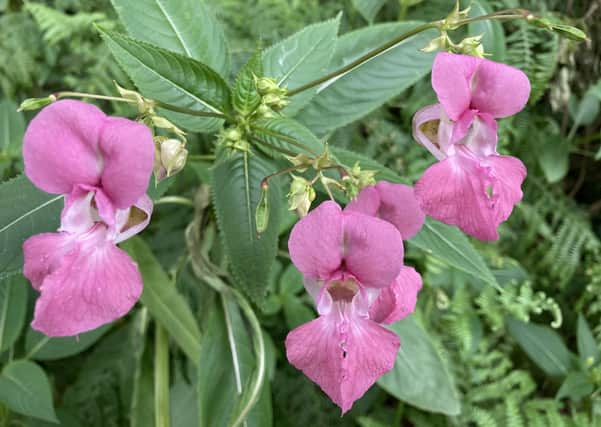Alien invasion alert to people in Nidderdale


During Invasive Species Week (May 24-30), residents and visitors are being asked to report sightings of Himalayan balsam in the protected landscape.
Jackie Smith Officer for the Headwater for Healthy Rivers project with the AONB, said: “Our team of consultants, contractors and volunteers work to survey and remove the offending plant, but we need more volunteers.
Advertisement
Hide AdAdvertisement
Hide Ad“We’ll be hosting a number of Volunteer Days dedicated to balsam pulling this summer, for people who would like to get involved and help.”
Invasive Species Week is a nationwide annual event led by the Non-Native Species Secretariat (NNSS) to raise awareness of invasive species, and how everyone can help to prevent their spread.
A non-native plant, Himalayan balsam impacts the health of riverbanks and wildlife.
A recurring problem, the invading plant is persistent thanks to its explosive seed heads, which spread very easily. The prime-time to try to control the invasive growth is July and August.
Advertisement
Hide AdAdvertisement
Hide AdThe surveying and removal of Himalayan balsam is being carried out in three headwater river waterbodies in Upper Nidderdale, including at a reservoir designated as Site of Special Scientific Interest.
The invasive growth overshadows natural plant species, which impacts on bio-diversity and river health. It causes widespread erosion of river and canal banks leading to flooding and the suffocation of fish eggs.
Jackie added: “Himalayan balsam is a very persistent plant and creeps back.
“Everyone can play a role in helping combat the problem.
“We’d like to encourage landowners to remove the plants before they seed in August, and walkers can help us by keeping an eye out for it and reporting it to a national database.”
Advertisement
Hide AdAdvertisement
Hide AdNidderdale AONB is currently running the Headwater for Healthy Rivers project, funded by a Water Environment Grant, to improve the health of key waterbodies in the Humber river basin district until March 2022.
The public can record the presence of Himalayan balsam on a national database via the Non-native Species Secretariat website.
Although the public are also asked to remove the plant on their own property if they can, if the seeds have already developed, trying to pull the plant has no benefit and can even spread it to new locations.
Jackie added: “It’s best the removal is left to trained volunteers, as Himalayan balsam can grow on steep drops on the water’s edge, and it’s important not to trespass too on any private lands.”
Advertisement
Hide AdAdvertisement
Hide AdHimalayan balsam was introduced to the UK in 1839 and grows up to two metres.
It has large, pink flowers shaped like a bonnet and the stems are green to red early in the year, turning pink to red in summer.
To sign up as a volunteer, go to: https://nidderdaleaonb.org.uk/get-involved/volunteering/